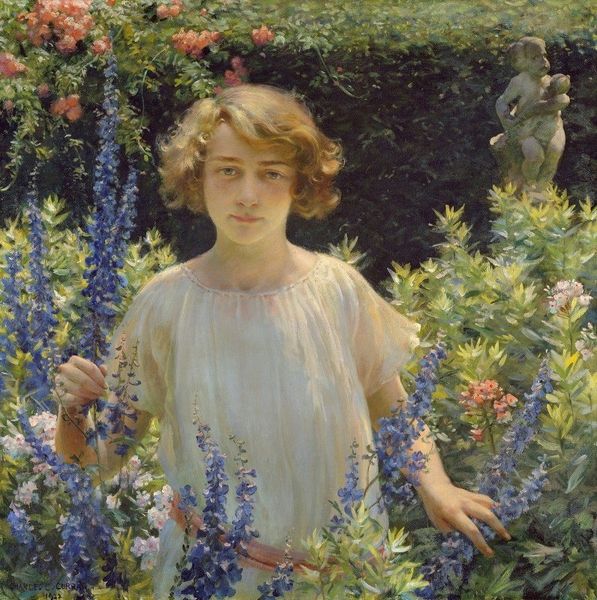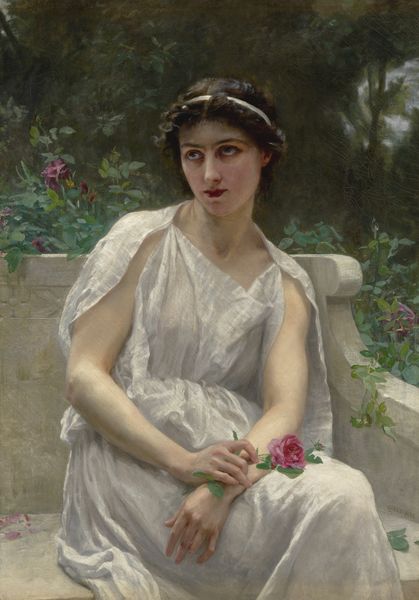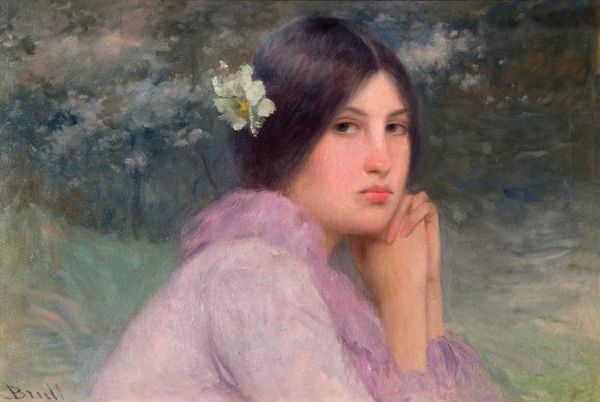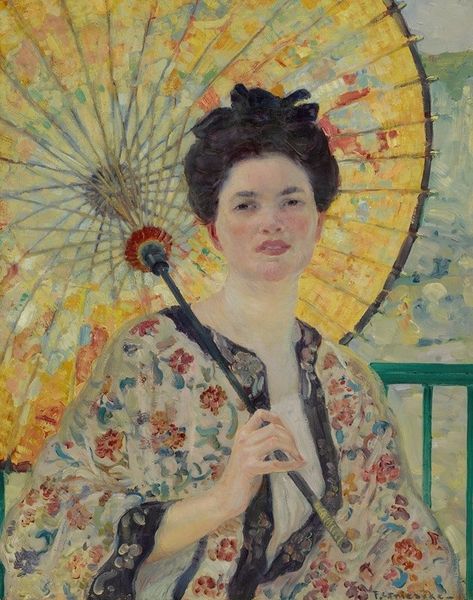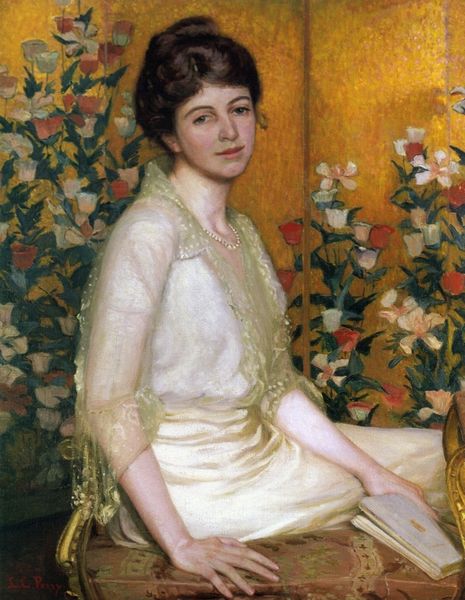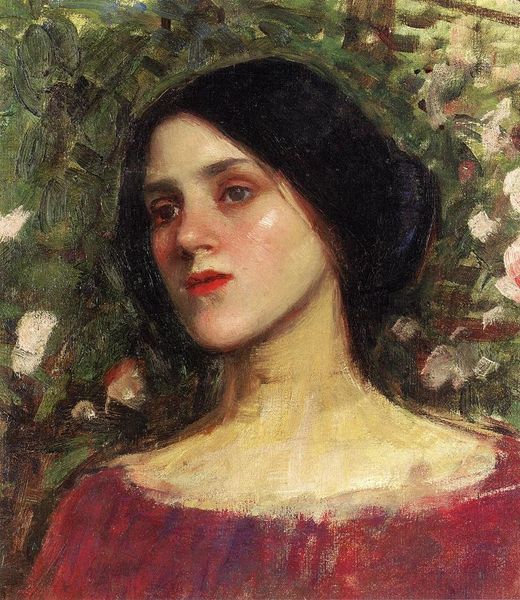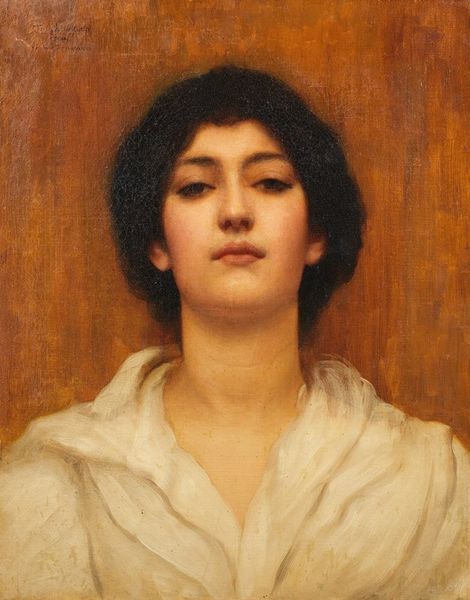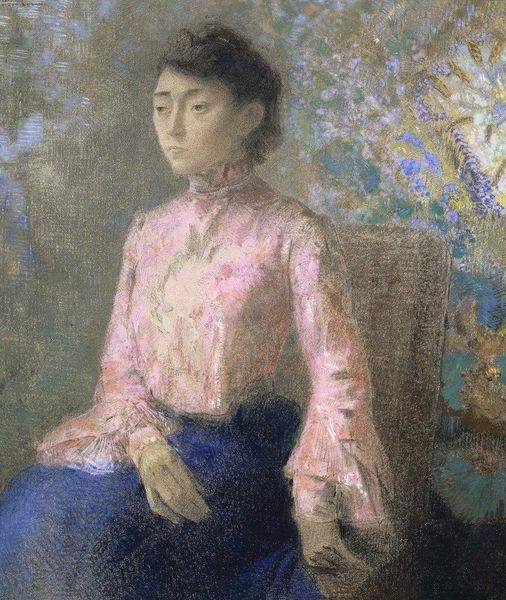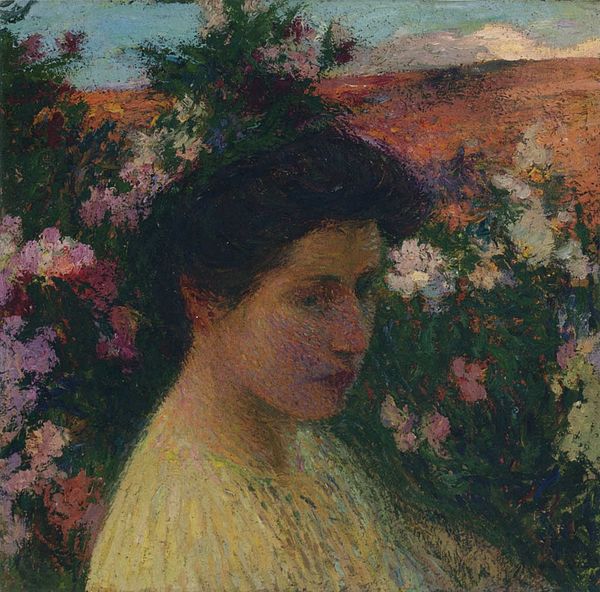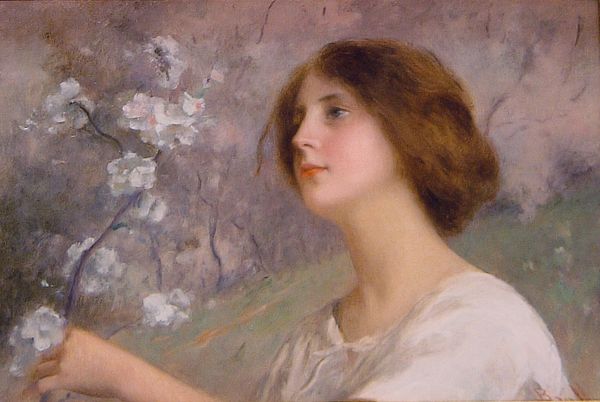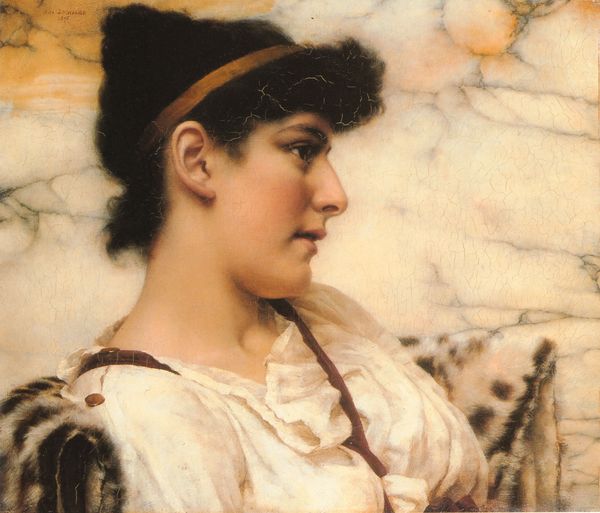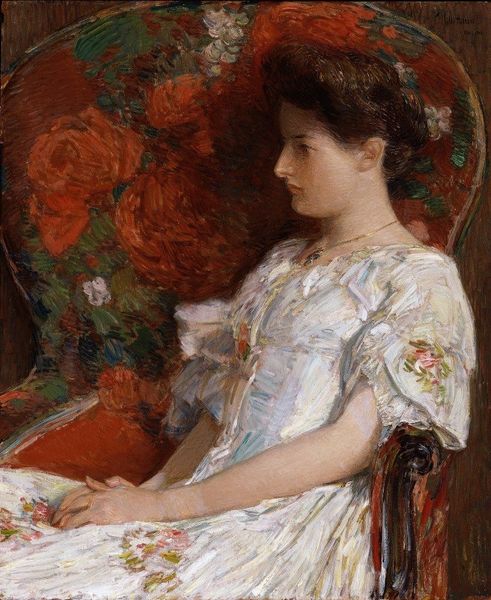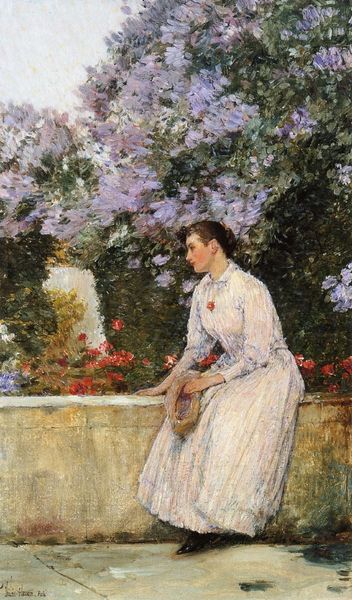
painting, oil-paint
#
portrait
#
painting
#
oil-paint
#
oil painting
#
japonisme
Copyright: Public domain
Fujishima Takeji painted this portrait, "Lady with Morning Glory," in the late 19th or early 20th century, capturing a moment of serene beauty. The morning glory, or Asagao in Japanese, symbolizes fleeting love and the ephemeral nature of life. Here, the woman is framed by the flower, its delicate blooms echoing her own transient beauty, a motif reminiscent of Botticelli’s Venus emerging from her shell, surrounded by roses. The morning glory, with its daily cycle of blooming and fading, evokes a sense of melancholy, a meditation on life's impermanence. The visual representation of this flower touches upon a deep-seated human awareness of mortality. The morning glory's fleeting beauty is captured here, reminding us of the cyclical nature of existence, forever resurfacing in art and culture, each time colored by new contexts and emotions.
Comments
No comments
Be the first to comment and join the conversation on the ultimate creative platform.
